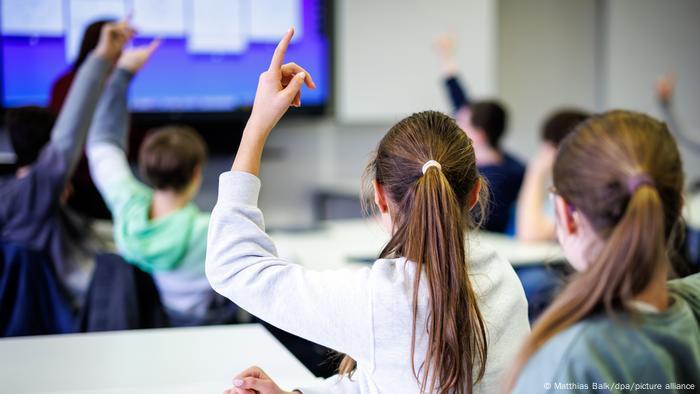What American Students Learn About Climate Change

The Challenge of Teaching Climate Change in the Classroom
Jeff Grant, a high school science teacher in Illinois, signs off his emails with "science on!" This small gesture reflects his deep commitment to the subject he teaches. However, his dedication now extends beyond traditional teaching methods. He has taken on the challenge of integrating climate change into his curriculum, a topic that some educators find uncomfortable.
Grant is an avid reader of scientific journals and books, and spends time outdoors, which gives him a firsthand understanding of how rising temperatures are affecting the planet. "I've personally seen the effects of climate change over the last decade," he said, citing changes in aquatic, forest, and prairie ecosystems. As a result, he has started to incorporate these changes into his lessons.
Research from Yale University suggests that Grant's approach would be widely welcomed. Three-quarters of adults in the United States believe schools should teach the causes, consequences, and potential solutions to global warming. Glenn Branch, deputy director of the National Center for Science Education (NCSE), emphasizes that today's students will face challenges due to climate change and need a basic understanding of its impacts and solutions.
Local Control and Variability in Curriculum
The NCSE is one of several organizations working to ensure students receive accurate information about climate change. However, the decentralized nature of the U.S. education system means that curriculum decisions are made at the local school district level. With over 13,000 districts across the country, this leads to significant variation in what is taught.
In some states, teachers can refer to the Next Generation Science Standards for guidance on teaching climate change. But these standards are not mandatory, and as Grant points out, they do not go far enough. "Not every state has that as part of their curriculum," he said, adding that even if they do, they don't offer lesson plans. "It's up to the teachers or the school districts to develop those things or find resources to help them."
This lack of standardized guidelines presents a problem, especially since many educators themselves have never learned about climate change. They are faced with a vast array of resources and competing interests from powerful groups trying to influence classroom content.
Fossil Fuel Influence in Education
Branch highlights that there have been systematic attempts to provide teachers with misinformation about climate change. Materials from ideologically motivated groups, such as the Heartland Institute, often promote climate change denial. Additionally, fossil fuel companies have their own educational arms. For example, the Oklahoma Energy Resources Board (OERB) offers materials that present a favorable view of fossil fuels.
The OERB provides illustrated books featuring a character named "Petro Pete" who praises human dependence on fossil fuels. The agency also offers workshops and curricula that give insights into the oil and gas industry. Educators who participate can receive professional development credits, stipends, and class field trips.
Melissa Lau, a science teacher in Oklahoma, says such offerings can be appealing to teachers who lack sufficient knowledge about climate change. "It seems legit... it just gives the impression of 'look how good the fossil fuel industry is.' It minimizes the impact." While the OERB did not respond to requests for further information, Lau notes that these materials can distort the understanding of climate change.
Making Climate Change Relevant
Lau explains that in Oklahoma, where farming and fossil fuels are major industries, addressing climate change can be challenging. "A lot of times it is, 'you know, my dad is just trying to make a living, we're trying to feed our family, keep a roof over our heads.' It gets personal."
Having family members in both industries has helped her address difficult topics with her students. "I think that puts them at ease." However, not all teachers in the state feel comfortable discussing the issue, especially with the current administration's stance on climate change.
Despite these challenges, Lau and Grant remain committed to highlighting the importance of climate change. Both are involved in creating resources and spreading awareness. Grant organized a day-long conference for hundreds of educators to learn about climate science, while Lau advocates for a more open discussion on the topic.
A Message of Hope and Responsibility
Lau emphasizes that the climate crisis is not about vilifying individuals but recognizing it as an existential threat. "It isn't about vilifying individual humans. This isn't a morality issue. This isn't an identity issue. This is our greatest existential human crisis."
She believes that while humans are the cause of many environmental issues, they can also be the solution. This message resonates with Grant, who is planning another conference called H.O.P.E (How Our Planet is Evolving). He expects a larger turnout next year.
"I think a majority of teachers are in the same boat," Grant said. "We're all trying to help kids better navigate the world."
Post a Comment for "What American Students Learn About Climate Change"
Post a Comment